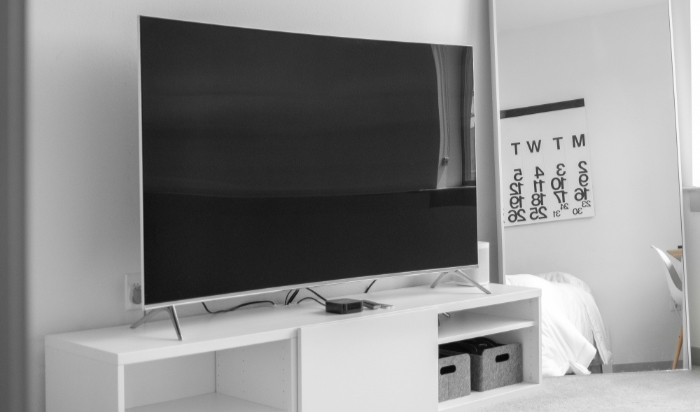Why Is HDR So Dark on My TV? The HDR Paradox

In today’s technology-driven world, how we consume visual content has significantly transformed over the years. One of the most revolutionary developments in this space has been the advent of High Dynamic Range (HDR) technology.
Known for its ability to deliver enhanced contrast, greater color accuracy, and brighter highlights, HDR has quickly become a critical component of our modern viewing experience. As immersive as it might sound, HDR isn’t without its fair share of confusion and misconceptions, especially for everyday users.
One common issue that has sparked widespread discussion is the seemingly paradoxical darkness of HDR on television screens. A technology designed to improve picture quality sometimes ends up looking darker than its Standard Dynamic Range (SDR) counterpart, leading to an experience that can feel less vibrant and detailed.
Basics of HDR Technology
High Dynamic Range, or HDR, is a cutting-edge technology that aims to produce a more immersive and realistic visual experience. In essence, it enhances the contrast ratio of images — the difference between the darkest and brightest points — and provides a wider color palette.
This results in an image with more depth, where both shadow and highlight details are preserved, presenting a closer representation of how the human eye perceives real-world scenes.
HDR versus Standard Dynamic Range (SDR)
To truly appreciate the benefits of HDR, it is useful to compare it with Standard Dynamic Range (SDR), its predecessor in television technology. SDR was the standard for many years and is still used in many broadcasting, streaming, and physical media formats.
It operates within a limited range of color and brightness values, thus restricting its ability to represent extreme brightness and subtle shades of color.
In contrast, HDR opens up a whole new world of color and light. It allows for a greater number of brightness levels between black and white, expanding the range of both contrast and color significantly. This means that bright parts of the image can be much brighter, so the image seems to have more ‘depth.’ Furthermore, colors can be more detailed and varied, enhancing the overall viewing experience.
Types of HDR Formats: HDR10, Dolby Vision, and HLG
Like most technologies, HDR isn’t one-size-fits-all. There are several HDR formats, each with its own strengths and uses. HDR10 is perhaps the most common, adopted by a majority of TV manufacturers and content producers.
It’s an open standard, which means it’s available for anyone to use without paying licensing fees.
Dolby Vision, on the other hand, is a more advanced version of HDR. It supports a higher maximum brightness and a wider color gamut, offering more detailed metadata on a scene-by-scene or even frame-by-frame basis.
However, it requires licensing from Dolby, which leads to its lesser adoption compared to HDR10.
Lastly, Hybrid Log-Gamma (HLG) is an HDR format developed for live broadcasts. Unlike other formats that use static or dynamic metadata to convey brightness information, HLG is designed to be backwards compatible with SDR, making it ideal for broadcast TV.
The Dark HDR Issue: An Overview
Since its advent, HDR has been a transformative force in the world of televisions and screens, but it hasn’t been without its share of user complaints and concerns. Among the most prevalent is the paradox of the “dark HDR” issue.
For a technology that’s supposed to elevate brightness, color, and contrast, it seems counterintuitive that HDR can often make the content appear dimmer.
Many viewers report that when they switch their television settings to HDR mode, the image becomes noticeably darker than the Standard Dynamic Range (SDR) version. Dark scenes can seem overly gloomy, losing detail in the shadows, while bright scenes may lack vibrancy and pop.
Technical Reasons Why HDR Content Can Look Darker on Some TVs
The issue of dark HDR is multifaceted, rooted in a complex interplay of hardware limitations, content creation processes, and viewer environments. A few technical reasons include the television’s maximum brightness capability (often measured in ‘nits’), the way the TV interprets HDR metadata, and the default settings of the television for HDR content.
Moreover, the HDR mastering process plays a crucial role, where the content may have been mastered at high brightness levels that many TVs cannot fully replicate, leading to dimmed-down playback. Differences in content distribution platforms and the way they handle HDR can also influence the brightness of HDR output.
Deep Dive: Reasons behind Dark HDR
Understanding the factors contributing to the dark appearance of HDR on TV requires a deep dive into a myriad of technical aspects.
The Role of Brightness and Contrast in HDR
Brightness and contrast lie at the heart of HDR technology. HDR aims to represent a more extensive range of brightness levels, from deep black to bright white, preserving details in both shadows and highlights. However, there can be discrepancies between how content is mastered and how your TV displays it, leading to an HDR image that appears too dark.
For instance, if the content was mastered at a high peak brightness that your TV cannot reach, it might dim the entire image to maintain contrast and avoid clipping highlights.
The Impact of Metadata on HDR Content
HDR uses metadata — additional data about the data — to communicate how the image should be displayed. This includes information about the brightness level, color grading, and other properties of the content.
But not all TVs interpret this metadata in the same way, leading to potential inconsistencies in how HDR images are displayed. For example, a TV might read the metadata indicating a high peak brightness and, unable to achieve that level, reduce the overall brightness to compensate.
Influence of TV Settings on HDR Brightness
Often, the default settings on TVs are not optimal for HDR viewing, leading to a darker image. This is particularly true for power-saving settings that reduce screen brightness.
Furthermore, TVs often have different settings profiles for SDR and HDR modes. If the HDR mode isn’t properly calibrated, it could lead to a dimmer image when watching HDR content.
Differences in HDR Processing between TV Models and Manufacturers
HDR processing can vary significantly between different TV models and manufacturers. Some TVs might have superior processing capabilities that allow them to display HDR content with greater brightness and contrast. Others might struggle with certain HDR formats or brightness levels, leading to a darker image.
Consequences of SDR Content Conversion
Converting SDR content to HDR, a common feature in many modern TVs, can also influence brightness. This process, known as “upscaling” or “upconversion,” expands the color and brightness range of the original content to fit HDR standards.
However, this conversion can sometimes result in an image that’s darker than the original SDR version.
Challenges with HDR Content Creation and Distribution

Creating HDR content is a meticulous process that involves various production and post-production stages. From capturing scenes with HDR cameras to color grading in post-production, the goal is to use the extended dynamic range to create a vivid and immersive visual experience.
However, content creators often face the challenge of mastering the content for different types of displays with varying brightness capabilities, which can sometimes result in darker HDR content.
The Impact of the Mastering Process on HDR Brightness
During the mastering process, content creators use a reference monitor to adjust the color and brightness levels of the content. These monitors can often display higher peak brightness levels than most consumer TVs.
Consequently, if content is mastered for a very high peak brightness, it might appear darker when displayed on a TV that can’t reach the same brightness levels. The TV will often dim the image to maintain contrast and avoid overblown highlights, leading to the “dark HDR” issue.
Differences between HDR Content Delivery Platforms
The platform used for content delivery also influences the brightness of HDR. Streaming services, broadcast television, and physical media like Blu-ray discs all handle HDR differently.
For instance, streaming platforms often use a technique called “dynamic range compression” to reduce the amount of data being transmitted. This can sometimes lead to a loss of detail in both the darkest and brightest parts of the image, making HDR content appear darker.
In addition, the HDR format supported by the delivery platform can affect the brightness. As discussed earlier, HDR10, Dolby Vision, and HLG have different characteristics and requirements, which can impact how the HDR image is displayed.
Practical Tips for Brighter HDR Viewing
Now that we’ve covered the potential reasons for the dark HDR problem, let’s explore how you can adapt to these intricacies and improve your viewing experience.
Optimizing TV Settings for HDR Viewing
The default settings on your TV may not always be the best for HDR viewing. Adjusting parameters like brightness, contrast, and backlight can significantly improve the perceived brightness of HDR content.
Additionally, some TVs have specific HDR modes, such as HDR Bright or HDR Vivid, which can enhance the overall brightness.
The Importance of Ambient Lighting
The lighting environment in your viewing room can significantly affect the perception of brightness and contrast on the screen. In general, HDR content is best viewed in a dim or dark room.
Too much ambient light can wash out the picture, making it seem less vibrant. Using bias lighting — a light source placed behind the TV — can reduce eye strain and enhance perceived contrast.
Choosing the Right HDR Format for Your TV
Depending on your TV model and the content you’re watching, one HDR format might provide a brighter and more detailed image than another. If your TV supports multiple HDR formats (like HDR10, Dolby Vision, and HLG), you might want to experiment with different formats to see which one gives you the best results.
Considerations When Buying a New HDR TV
If you’re in the market for a new HDR TV, pay close attention to its peak brightness capability, measured in ‘nits.’ A higher peak brightness will typically lead to a brighter HDR image. Additionally, consider the TV’s HDR format support and its ability to process HDR metadata effectively.
Using HDR Content Correctly
Make sure that the content you’re watching is intended for HDR viewing. Watching SDR content in HDR mode can often lead to a darker image. Additionally, be aware of the limitations of certain content delivery platforms, as discussed in the previous section.
Conclusion
Understanding the complexities of High Dynamic Range technology and its implementation is crucial for making the most out of your HDR viewing experience. While the occurrence of darker images in HDR mode might seem paradoxical, the root causes, as we have discovered, are often deeply ingrained in the intricate interplay of content creation, distribution, and display technology.
From mastering content on high peak brightness monitors to the variation in HDR processing capabilities across different TV models and brands, a host of factors contribute to the perceived darkness. Furthermore, content delivery platforms and their unique handling of HDR can also play a role in the image brightness.
However, despite these challenges, the brilliance of HDR technology remains undeniable. With a few adjustments to your TV settings, attention to ambient lighting, careful selection of HDR formats, and thoughtful considerations when purchasing a new TV, you can significantly brighten your HDR viewing experience.
Moreover, it’s important to remember that the world of HDR is continually evolving. Technological advancements are progressively addressing the dark HDR issue, and future developments promise to bring us even closer to the vision of a truly immersive and lifelike visual experience.
In the end, HDR is about bringing more realism to our screens, offering a broader spectrum of colors and a wider range of brightness. By gaining a deeper understanding and adjusting your setup accordingly, you can immerse yourself in the true beauty of HDR, as it bridges the gap between technology and the human visual system.


